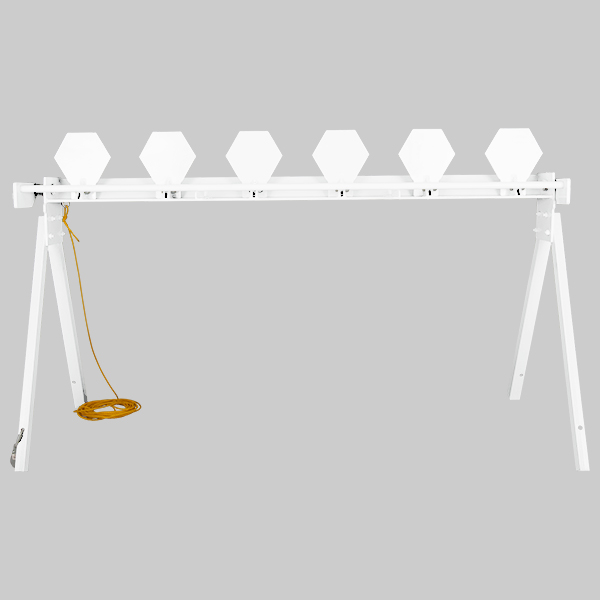Shooting Targets
5 Tips for Introducing Your Kids to Shooting Sports
Teaching a child to shoot can be rewarding for both the parent and the child, but parents need to understand a few things first:
- Safety is the most important thing you can teach a child when he or she is learning to shoot.
- Being patient and flexible will help your child learn to love the sport and will encourage safety.
- Certain firearms are needed when teaching youth about shooting sports.
Shooting is something the whole family can enjoy, and it’s a skill that lasts a lifetime. If the adults in your family are into shooting sports, you might wonder how to introduce your kids to the sport. There are several things you’ll need to do, and you might start with these five tips regarding shooting for kids.
1. Lead With Patience
You really shouldn’t rush into anything when teaching something new to a child, but when it comes to guns, you should take that even more seriously. You never want to push shooting sports on a child who isn’t ready. Some just don’t feel comfortable around guns yet, and some aren’t physically ready to handle a gun. Be patient, so when your child is ready, it will be a positive experience for everyone.
Keep in mind that you’re the parent, so you have the final say. If you feel your child is too young, but he or she feels ready for shooting, you can put your foot down for another year or two until the child has reached a certain age or maturity level.
Patience is also essential once you begin training. Mistakes happen anytime someone learns something new, and you don’t want those mistakes to cause harm to anyone. Staying patient is the key to staying safe. Take it slow, and don’t ever make your kids feel like their mistakes define them and make them unworthy of the time it takes to learn how to shoot. They’ll enjoy it more if they have a quality experience while learning with patient parents.
2. Teach Safety Rules and Review Them Often
Safety is the #1 most important thing you can teach a child when learning how to shoot. It’s common knowledge to you and your shooting buddies, but you have to remember that your child has never handled a firearm before. One misstep, and you could be dealing with a serious injury. There are several safety issues you’ll need to go over, but the following are a handful to start with:
- Treat every weapon like it is loaded, even if you think it’s not.
- Keep your safeties engaged at all times unless you’re currently taking a shot.
- Keep your finger away from the trigger until it’s time to fire.
- Don’t ever point your muzzle at another person or at anything you don’t want to be destroyed. Instead, keep it pointing at the ground until you’re ready to shoot.
- Don’t ever leave your firearm or ammunition sitting around unattended.
- Always know what is in front of, to the side of, and behind your target.
These and other safety rules should be drilled into your child’s head. Unfortunately, children often get distracted or “forget” the rules, and when it comes to safety, that is when you should be strict and firm about what you’re teaching. If the child has to suffer a consequence because he or she failed to uphold safety rules, you have to be the parent that imposes a consequence.
Once you feel your child has a solid understanding of safety, it’s time to practice with a BB gun or low-velocity air rifle. These firearms can help your child adjust to safety rules, but the child should understand that these guns can injure someone just like any other gun.
3. Pick the Right Firearm
After your child has practiced with BB guns or a low-velocity air rifle, it’s time to move up to something bigger, but you never want to go too big when it comes to guns for kids. A .22 caliber rifle is often a good choice for someone young, as the recoil isn’t as great as another firearm would be. A .22 is more comfortable against the shoulder and will allow your child to be more comfortable and confident while handling and shooting the gun.
Pistols, anything with “magnum” in the name, and other similar firearms should be off-limits for any child. If you have a teenager who wants to move up from a .22, you can work up to something heavier. As a parent, keep in mind that you have to spend more time on safety and teaching every time you make that change.
4. Start With the Basics
Regardless of your child’s age, size, and the firearm you choose to use, you have to start teaching with the basics. Of course, safety should be first, but once your child has all the safety rules drilled into his or her head, you can move on to the basics of firearm usage. Some things to begin with include:
- Holding a proper stance when gripping the firearm
- Safely loading and unloading the weapon
- Using good trigger discipline when placing fingers on the gun
- Adjusting the gun for accuracy
Not every parent feels comfortable with teaching these things to a child, and that’s OK. Look for a shooting program in your area that has certified instructors who can help. Several shooting schools have programs specifically designed for children, and once they’re to a certain point, they have access to the school’s shooting range.
5. Be Flexible and Have Fun
Maybe you’re more excited about teaching your child to shoot than your child is. If that’s the case, consider switching to a different weapon. For example, if guns make your child feel uneasy, switch to bowhunting for a time. If bows make your child feel uneasy, let him or her shoot around with a slingshot for a while. This flexibility helps your child get comfortable with bigger, heavier weapons in time, and he or she will have more fun doing it. Once your child feels the excitement of hitting cheap cardboard shooting targets with a slingshot or a bow, he or she will get that itch to move up to something bigger and stronger.
Having fun is the key to teaching a child to shoot. Shooting sports need to be taken seriously with safety and basics as the first things you discuss and teach, but you can have a good time while you’re doing it. Buy some interesting targets to shoot at that are large enough to give your child satisfaction in shooting, such as a sasquatch, dinosaur, or alien target. Come up with a fun prize for the person who gets closest to the target. Make some goofy cardboard targets, so your child has something fun to aim at. All of these things can help the child learn to enjoy the sport.
Contact Us To Get Started
If your child is ready to learn the sport of shooting, MGM Targets has what you need to get started. Whether your child has had some exposure to BB guns, has been with you on a hunt, or is completely new to the sport, safety and the basics are essential to beginning, but you’ll need the right supplies as well. Contact MGM Targets today at 208-454-0555 or fill in our online form with questions, and we’ll get back to you as soon as possible.

